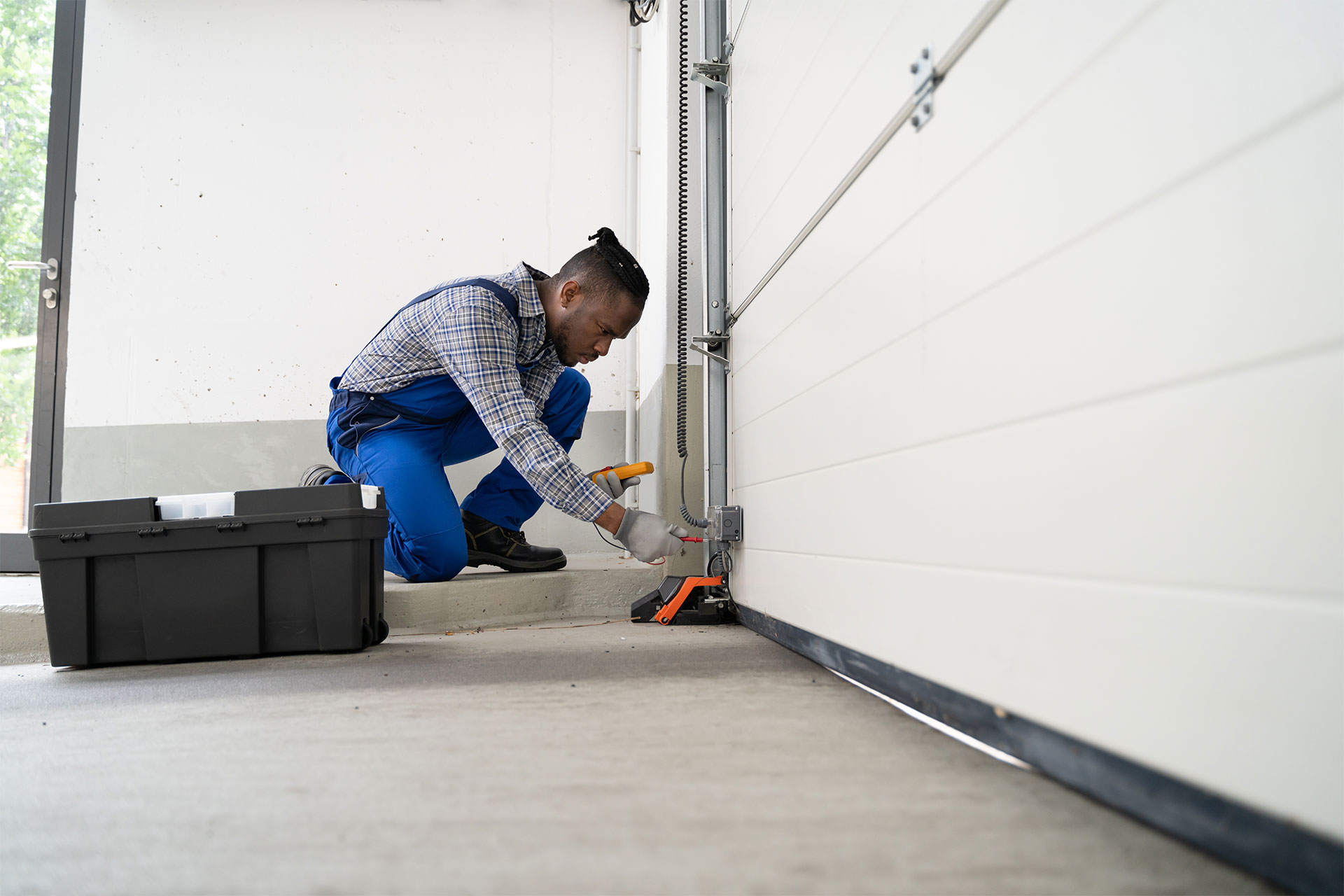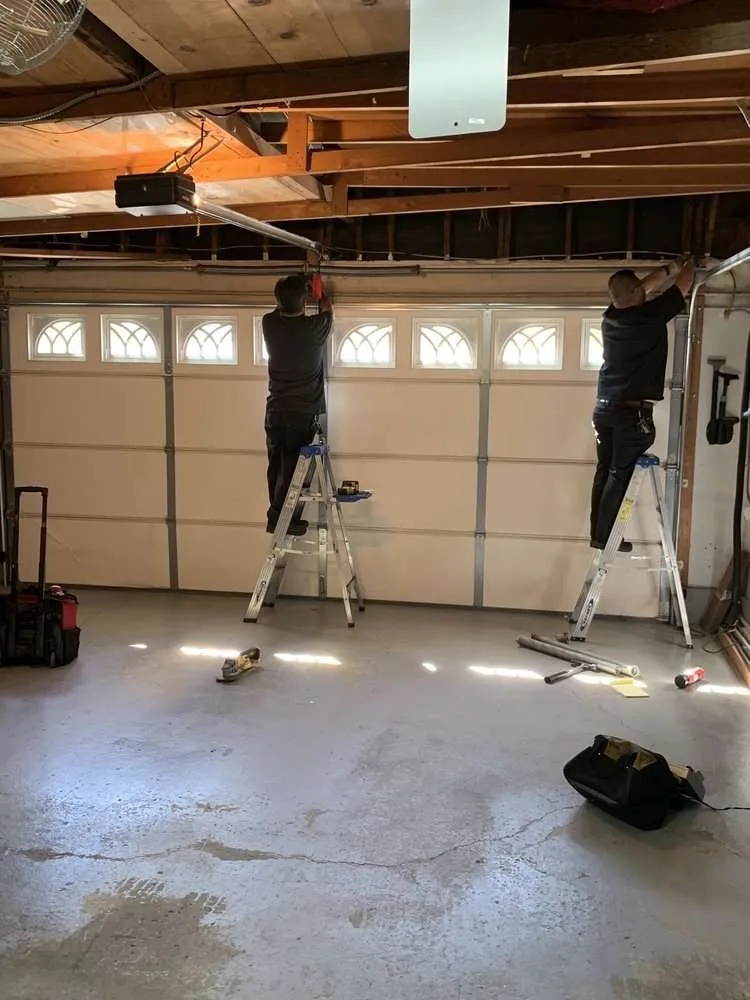Experienced Garage Door Service to Fix Wear and Tear Efficiently
Experienced Garage Door Service to Fix Wear and Tear Efficiently
Blog Article
Common Garage Door Issues and Exactly How to Deal with Them
Garage doors are essential for both security and comfort, yet they usually present a selection of usual issues that can frustrate home owners. While some concerns may show up straightforward to settle, others may require a much more nuanced understanding of garage door mechanics.
Noisy Garage Door Procedure
A noisy garage door operation can be a considerable source of aggravation for house owners, often showing underlying mechanical problems. Such disruptions may come from numerous reasons, including damaged rollers, loose hardware, or not enough lubrication. Determining the resource of the noise is critical for reliable resolution.
Over time, these elements can wear away, leading to grinding or squeaking audios as the door relocations. In addition, loosened bolts or screws in the door mechanism can develop rattling audios during operation.
One more contributing variable is inadequate lubrication of the door's moving parts. Using a top notch lubricant to the tracks, springtimes, and rollers can substantially diminish friction and sound. Homeowners should execute this upkeep periodically to maintain optimal performance.
Lastly, the garage door opener might likewise generate sound due to its age or mechanical issues. If the noise persists in spite of attending to other factors, seeking advice from a specialist for a detailed inspection and prospective fixing may be needed.
Door Will Not Open Up or Shut
Experiencing a garage door that will not open or close can be extremely irritating and commonly signals a malfunction within the system. Several elements can contribute to this issue, and recognizing the source is essential for reliable resolution.

Next, evaluate the safety sensing units located at the base of the door. These sensors can come to be misaligned or blocked by debris, stopping the door from running correctly. Tidy the sensors with a soft towel and guarantee they are aligned.
In addition, the garage door's inner elements must be assessed. Problems such as a damaged spring, worn-out rollers, or a damaged opener can hamper movement. If any kind of components seem damaged, it may be recommended to seek advice from a professional for repairs.
Misaligned Tracks
(Premium Service)Misaligned tracks can severely interfere with the smooth operation of a garage door, bring about functional failures such as irregular activity or full immobilization. This problem usually develops due to a selection of aspects, including damage, unexpected effects, or inappropriate installation. When the tracks are misaligned, the rollers can stagnate easily, which not only stresses the motor but also poses safety and security risks.
If you discover any type of inconsistencies, it is vital to deal with the concern promptly. Very carefully tap the track back into its correct position making use of a rubber mallet or a similar tool, guaranteeing it is straight and level.
As soon as the positioning is corrected, retighten the screws to protect the track. For a much more long-term service, consider enhancing the tracks with extra brackets. Routine maintenance, including cleansing the tracks and making certain rollers remain in good condition, can protect against future imbalances. By resolving misaligned tracks promptly, you can bring back the capability of your garage door and enhance its longevity.
Broken Springs
Amongst the different parts of a garage door system, busted springs are just one of the most usual issues that can considerably hinder its performance. Garage door springtimes are critical for stabilizing the weight of the door, permitting smooth opening and closing. When a spring breaks, it can result in a door that is challenging to run or, in many cases, completely inoperable.
There are 2 primary kinds of springs: torsion springs, which are installed above the door, and expansion springs, found on either side. Indicators of a broken spring consist of a door that won't open up, a noticeable space in the spring, or a loud sound during operation. Attempting to operate a garage door with a damaged spring can trigger more damages to the door or the opener.
Fixing broken springs is not a DIY project; it requires specialized tools and knowledge because of the high tension included. It is advisable to seek advice from an expert service technician that can securely replace the springs and make sure the door is appropriately stabilized. Routine upkeep and assessments can aid prevent springtime failures and prolong the life expectancy of the garage door system.
Remote Issues

The very first step is to inspect the batteries in the remote control. Change them if they are weak or dead. If the remote still stops working to run, evaluate the garage door opener to make sure that its sensors are tidy and unblocked. Dirt, debris, or misalignment might prevent the signal transmission between the remote and the opener.
Disturbance from various other digital tools can also hinder remote functionality. Guarantee that close-by gadgets, such as wireless routers or cordless phones, are not triggering disruptions. garage door service. why not find out more If interference is presumed, try moving these gadgets better far from the garage door opener
In some instances, the remote may need to be reprogrammed. Consult the supplier's guidelines to reset the remote control and synchronize it with the garage door opener. If all else falls short and the remote remains to malfunction, think about getting in touch with a specialist specialist for a comprehensive evaluation and possible substitute of the remote or opener.
Conclusion
(Quick and Easy)In recap, usual garage door troubles can substantially impact capability and safety. Attending to noisy procedure involves lubrication and tightening up equipment, while problems with opening or closing need evaluation of source of power and sensing units. Misaligned tracks can be treated with change, although broken springs require specialist treatment. Push-button control malfunctions typically emerge from weak batteries or disturbance, which can be solved through substitute or reprogramming. Aggressive upkeep and timely repair work can ensure ideal performance and longevity of garage doors.
Report this page